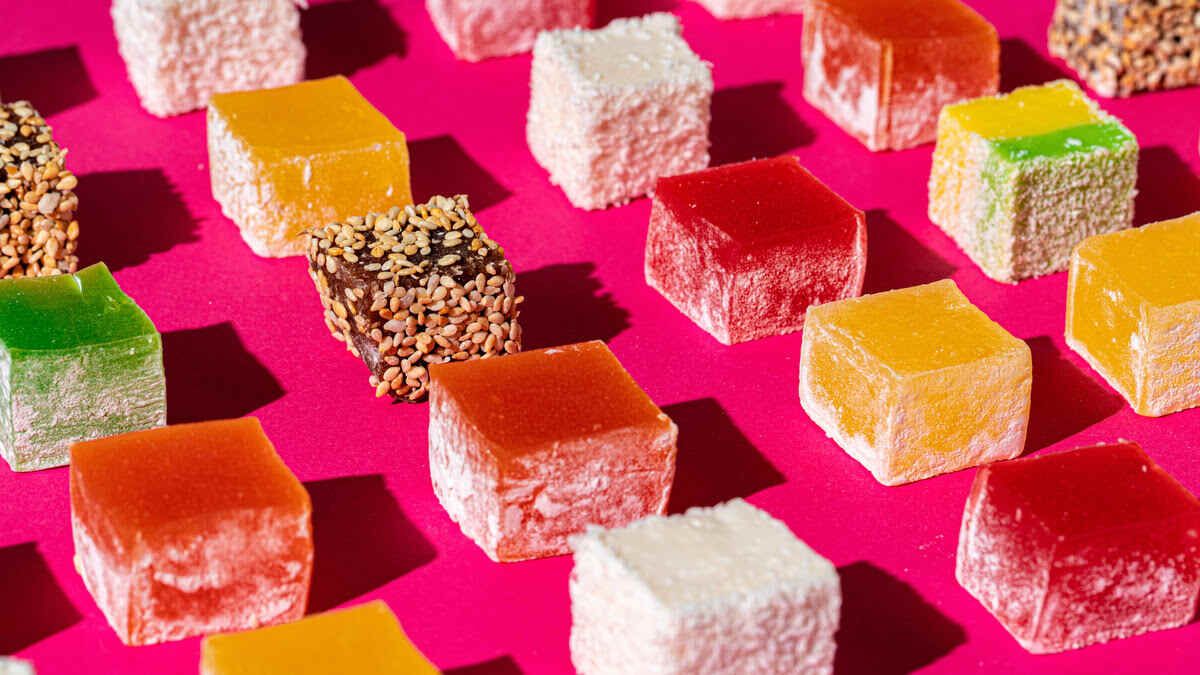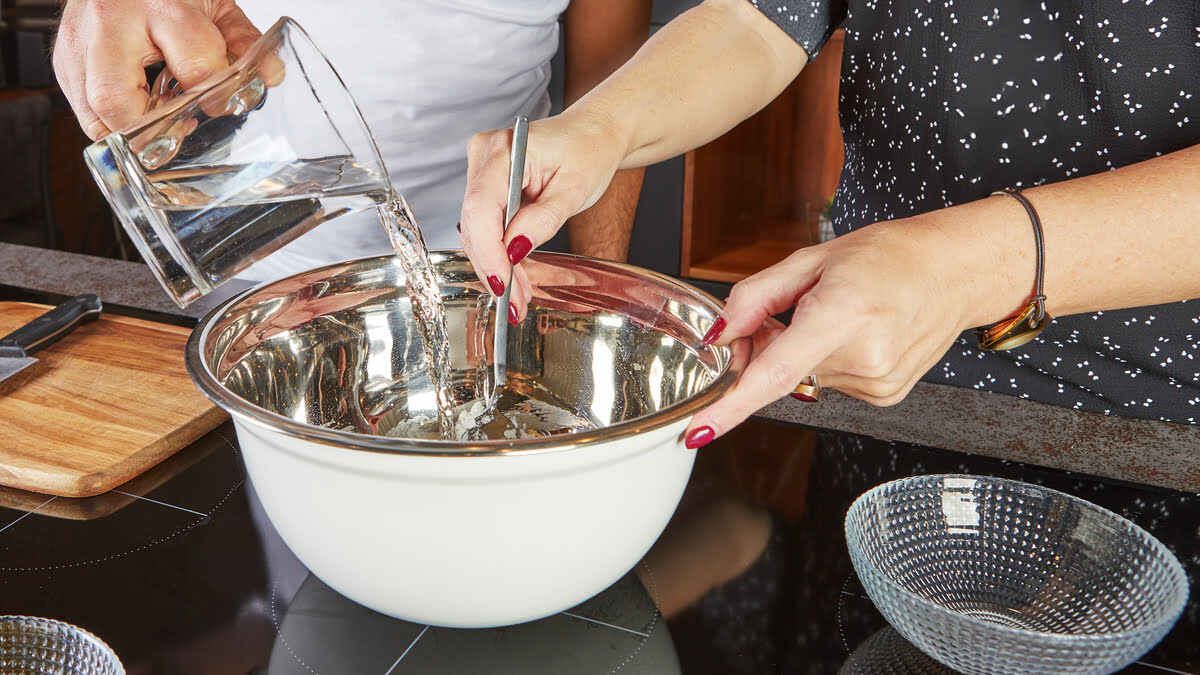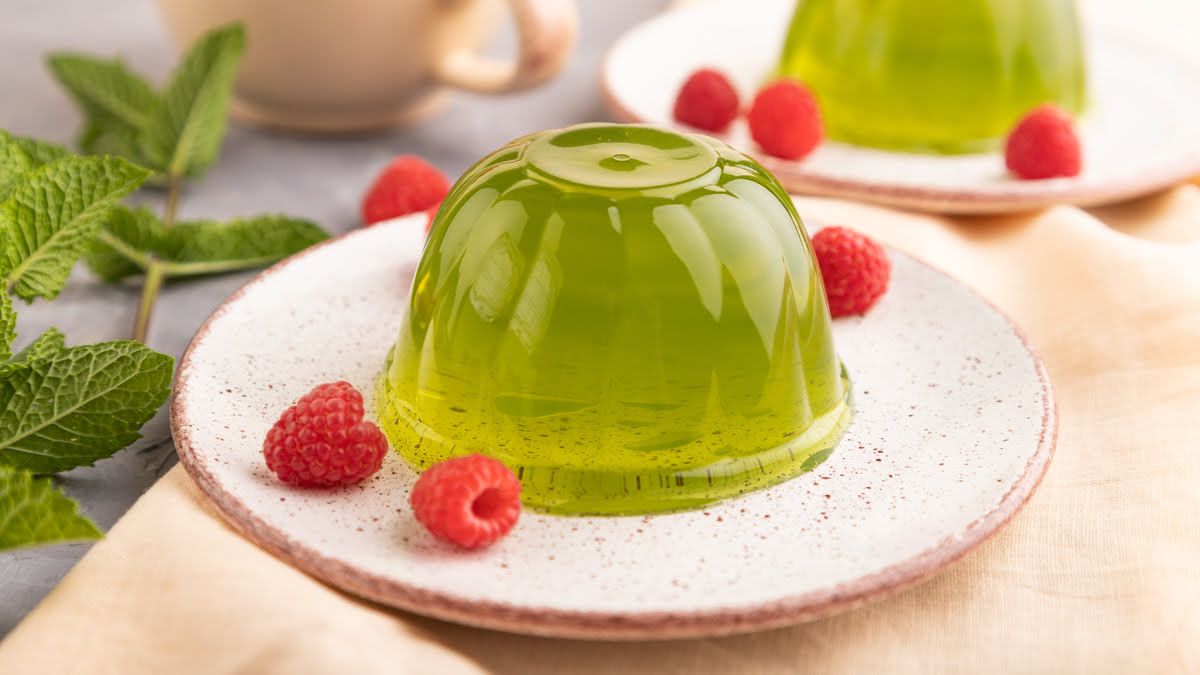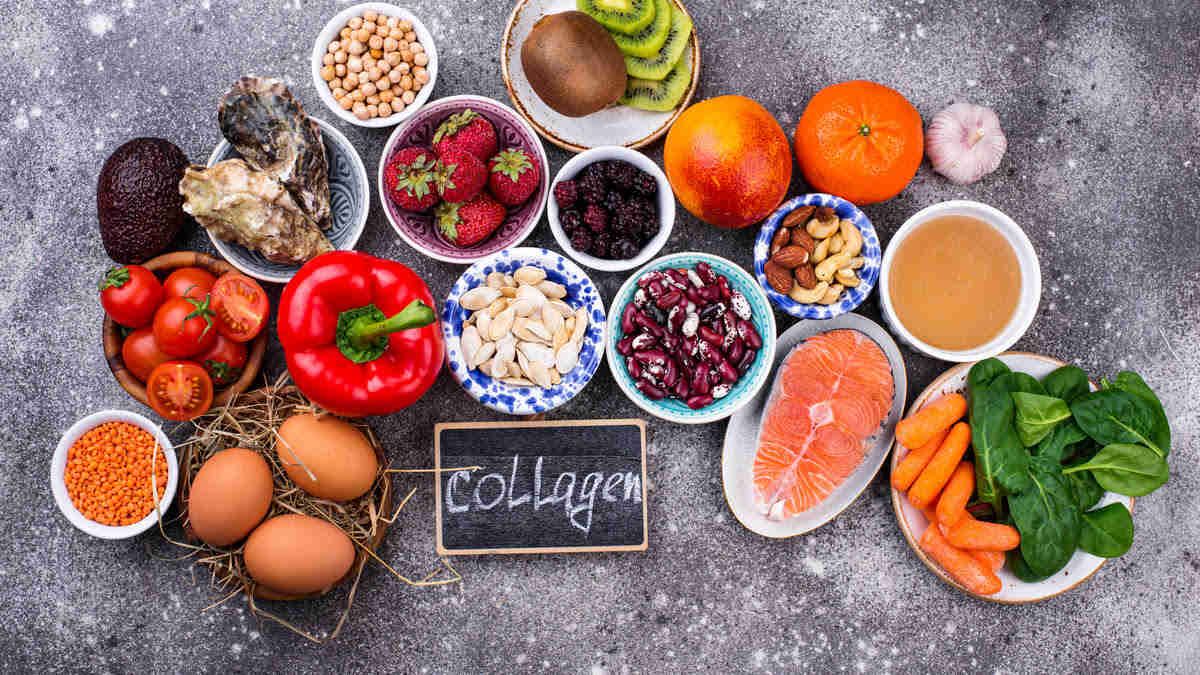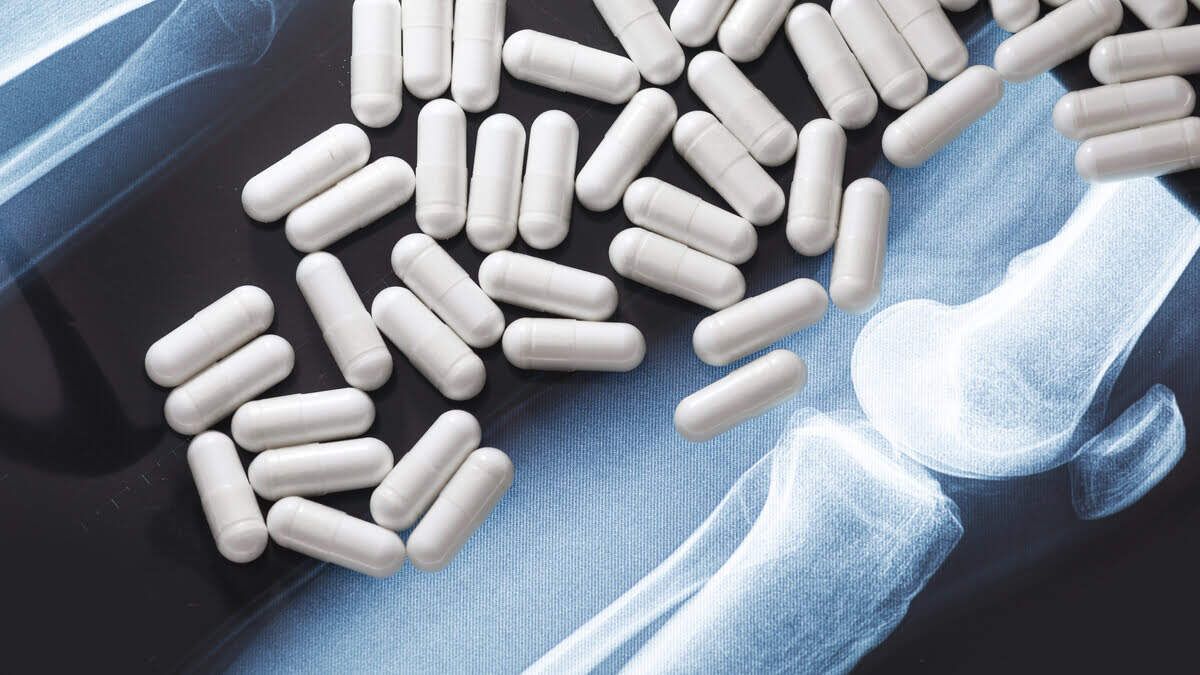In the kitchen, there are quite often situations when it is necessary to find an alternative to a particular ingredient. Sometimes this is due to a lack of product on hand, other times it is due to the need to adapt a dish to specific dietary requirements. Also, the increasing popularity of vegan diets is causing many people to look for plant-based alternatives to animal ingredients. One such ingredient is gelatin – commonly used in desserts and dishes that require texture. If you’re wondering what you can replace it with to enjoy the flavor of your favorite dishes without compromise, check out our recommendations.
Read the following article and find out what products will work perfectly as a substitute for gelatin in the kitchen – both in desserts and other dishes.
How important are gelatin substitutes?
Gelatin is an ingredient with exceptional gelling properties that plays a key role in the preparation of numerous dishes and desserts.
Thanks to its ability to form a gelatinous structure when dissolved in water, it is widely used in cooking and in the food industry. It is used not only in the production of jellies, mousses or jams, but also as a stabilizer in dairy and meat products. However, the growing popularity of diets that exclude animal products and the need to consider alternatives in the case of allergies or intolerances are making gelatin substitutes increasingly important.
Today, numerous substitutes are available that perfectly mimic the functions of gelatin, preserving its ability to thicken and stabilize dishes. These products make it possible to create both fruity desserts and velvety creamy soups or sauces without losing either quality or consistency.
What’s more, the development of food technology allows access to innovative solutions that not only comply with various dietary requirements, but also enrich the taste and texture of prepared dishes. With gelatin substitutes, therefore, you can enjoy your favorite dishes while taking care of your individual dietary needs and preferences.
What gelatin substitutes for vegans?
Vegan dishes require alternatives to traditional animal ingredients, such as the gelatin discussed in the article. This popular product does not fit into the principles of a plant-based diet, making it necessary to find suitable substitutes to ensure the desired consistency of dishes.
The decision to reach for plant-based substitutes is often based on both moral reasons and the desire to adapt meals to specific dietary requirements. Fortunately, there are numerous options on the market that not only meet these criteria, but also guarantee high quality and excellent taste.
Gelatin substitutes
Among the most popular vegan substitutes for gelatin is agar-agar, which is extracted from seaweed. It’s an excellent alternative for achieving a gelatinous texture in desserts and savory dishes. Another choice is often pectin – a natural ingredient in fruits, ideal for preparing jams or fruit jellies. Tapioca, on the other hand, often used as a thickener, will work well in creams and puddings, giving them a soft texture. It is also worth noting apple gel, which is perfect for desserts with a fruity character.
Thanks to these products, preparing vegan specialties becomes easier than ever before. Their variety means that everyone will find a solution perfectly suited to their needs, and the taste and texture of dishes will not differ from those made with traditional gelatin. By choosing these plant-based alternatives, you can enjoy unique desserts without compromise.
Agar-agar as a substitute for gelatin
Agar-agar is a natural ingredient with exceptional gelling properties. It is extracted from marine algae – mainly from red seaweed found in regions of Asia. Thanks to its plant origin, it is a widely appreciated alternative to gelatin, especially by those who follow a vegan or vegetarian diet. It is a mixture of two substances: agarose and agaropectin, which are responsible for its ability to form stable gels. Agar belongs to the group of polysaccharides, which makes it not only a functional kitchen ingredient, but also a valuable part of the diet.
Why choose agar-agar as a substitute for gelatin?
Agar-agar stands out not only for its properties, but also for its health benefits. It is rich in fiber, which supports the proper functioning of the digestive system, and contains numerous vitamins and minerals. These features make it one of the healthiest thickeners available on the market. What’s more, agar-agar is neutral in taste, making it ideal for both sweet desserts and dry dishes.
How does agar-agar work?
Agar-agar activates its gelling properties when exposed to high temperatures, so it is necessary to boil it when preparing food. When cooled, it forms stable, gelatinous structures that do not melt at room temperature. 1 teaspoon of agar is enough to thicken 2-3 glasses of liquid.
Pectin instead of gelatin
Pectin is a natural polysaccharide present in plant structures that plays a key role in the construction of cell walls and intercellular spaces. It is found abundantly in some vegetables, but its concentration is highest in ripe fruits. Among the richest sources of pectin are:
- apples,
- lemons and oranges,
- plums,
- grapes.
In the food industry, pectin is most often extracted from apples and citrus, due to their ease of processing and low production costs. This ingredient is not only versatile, but also completely plant-based, making it an excellent alternative to gelatin in vegan and vegetarian diets.
Why choose pectin as a gelatin replacement?
Pectin is a natural and healthy substitute for gelatin, which not only makes it possible to prepare dishes compatible with a plant-based diet, but also enriches them with fiber. Its neutral taste and versatility make it an indispensable ingredient in many recipes. The advantages of pectin are:
- Plant origin – ideal for vegans and vegetarians.
- Support for health – the presence of fiber supports the digestive system.
- Easy availability – pectin is widely available in stores and easy to use.
Pectin is an excellent choice for anyone who wants to create tasty, natural and healthy dishes with perfect texture. Thanks to it, vegan and vegetarian desserts become easier to prepare, and their taste delights even the most demanding culinary enthusiasts.
Will tapioca work well instead of gelatin?
Tapioca is a product extracted from cassava, a tropical plant native to South and Central America. It is created by processing its tubers, usually in the form of small balls, flakes or flour. It is known for its neutral taste, making it an extremely versatile ingredient in cooking. Tapioca is used in desserts, savory dishes and even beverages, such as the popular bubble tea.
Tapioca, while not a classic gelatin thickener, can serve a similar function in some dishes. Tapioca balls or flakes swell and become translucent during cooking, allowing them to give desserts or sauces the right texture. In flour form, tapioca acts as a thickener, working well in mousses or puddings. Although its gelling effect is more subtle than that of gelatin or agar, it will still work well if you want a velvety texture for the dish you are serving.
Tapioca can replace gelatin in recipes that require a subtle thickening or delicate texture, such as pudding or mousse. However, its gelling properties are less intense, so for dishes that require strong binding of ingredients it is better to reach for agar-agar or pectin.
Apple gel as an alternative to gelatin
Apple gel is a natural thickener of vegetable origin that is an excellent alternative to gelatin, especially in recipes for jams, preserves or jellies. Thanks to its high content of pectin, which naturally occurs in apples, apple gel helps to achieve the right consistency in dishes without the need for zoonotic ingredients. What’s more, its use helps reduce the amount of added sugar, making homemade preserves healthier and less caloric.
How to prepare homemade apple gel?
Apple gel can be easily prepared at home with a few simple ingredients and a little patience. Here is the step-by-step recipe:
- Choose the right apples – preferably those with a higher pectin content, such as antonovka.
- Thoroughly wash the fruits – do not peel them from the peel, as this is where the most pectin is found.
- Cut the apples into pieces – remove only the seed nests.
- Boil the apples in water – use enough water to slightly cover the fruits, then bring the whole thing to a boil.
- Strain through a clean cloth – repeat this process several times to get a clear liquid.
- Add a little sugar – depending on your taste preference, to enhance the gelling action and improve the flavor.
This will give you homemade apple gel, which you can store in jars or use directly for making preserves.
What alternative to gelatin for cream?
Gelatin often appears in recipes for creams, in which it acts as a stiffener, giving them the right consistency and stability. Its absence can make the mixture too runny, making it difficult to use in desserts or cakes. However, if you avoid animal products or are looking for alternatives, there are several effective ways to replace gelatin in creams.
Among the most popular substitutes for gelatin that will work well in creams are agar-agar, pectin, and ready-made cream fixes. Each of these ingredients has its own unique properties that allow you to get the right consistency of the cream, without compromising on taste or quality.
- Agar-agar is a natural plant-based thickener that does a great job of stiffening creams. To use it, all you need to do is dissolve it in warm water, boil it for a while, then cool and gently mix it with cream. Agar-agar is neutral in taste and works effectively even in small amounts.
- Pectin, which is known for making jams and preserves, can also be used to stabilize creams. Combined with the right amount of sugar and acid (such as lemon juice), it creates a slightly stiffened texture, ideal for desserts with a light, fruity character.
- Ready-made cream fixes, available in most stores, are a quick way to get a perfectly stable mass. However, it is important to carefully check their ingredients – some may contain zoonotic products. There are also fixes on the market dedicated to a vegan diet, which are based on starch.
For those looking for alternatives with a more intense flavor, making custard cream can be a great option. All you need to do is boil a pudding with plant milk (or classic milk) and, after cooling, combine it with butter or margarine. Such a cream is a bit more dense, but it is excellent for cakes or layering cakes.
Which gelatin substitute is better to avoid?
One formerly popular substitute for gelatin is carrageenan, extracted from the red seaweed known as Irish moss, which is naturally found on the coasts of northern Europe and America. Known in the food industry as E 407, carrageenan was once widely used for its thickening and gelling properties. It is still used in a wide range of products such as sausages, dairy products, jams, jellies, ice cream and even some cosmetic products such as toothpaste.
Why is carrageenan controversial?
Although carrageenan is a substance of natural origin, its use has been associated with concerns about negative health effects. Studies suggest that excessive consumption of this substance can lead to a number of health problems, including:
- Inflammatory bowel disease – especially when consumed regularly in large quantities.
- Ulcers and tumors – some studies indicate a possible link to the formation of lesions in the digestive tract.
- Cancer risk – there is evidence that carrageenan may have potential carcinogenic effects.
For this reason, carrageenan, although approved for use in the food industry, does not have a good reputation, and its presence in products is increasingly questioned by health-conscious consumers.
Is it worth using carrageenan as a replacement for gelatin?
Due to potential health risks, carrageenan is not recommended as an alternative to gelatin, especially in a diet based on natural and safe ingredients. There are many other, more recommended substitutes, such as agar-agar, pectin or tapioca, which are both effective and safe.
What to replace gelatin with in the kitchen? | Summary
Finding a suitable substitute for gelatin in the kitchen does not have to be a challenge – there are many natural and plant-based alternatives to achieve similar results in dishes. Choosing the right ingredient depends primarily on the type of dish, the desired consistency and individual dietary preferences.
For desserts such as jellies or creams, indispensable solutions are agar-agar or pectin, which, thanks to their gelling properties, perfectly replace traditional gelatin. If you are preparing fruit preserves, an excellent choice will be apple gel, which at the same time will reduce the amount of sugar. Tapioca, on the other hand, will work well in thickening creams, sauces and mousses.
Substituting gelatin in the kitchen is a chance to discover new possibilities and adapt dishes to a variety of needs – from vegan to gluten-free to less caloric. By reaching for plant-based substitutes, you can enjoy your favorite desserts and dishes without sacrificing quality or taste. Try our suggestions and see how easy it is to incorporate these alternatives into your kitchen!




